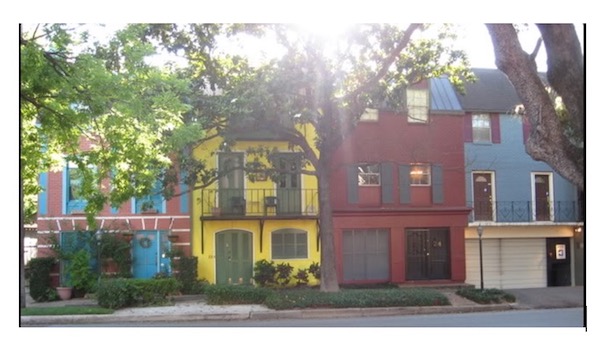Kevin Williamson, in “A Misunderstood ‘Diversity’” (National Review, March 7, 2017) quotes David Brooks from a New York Times oped:
For the life of me, I can’t figure out why so many Republicans prefer a dying white America to a place like, say, Houston.
Houston has very light zoning regulations, and as a result it has affordable housing and a culture that welcomes immigrants. This has made it incredibly diverse, with 145 languages spoken in the city’s homes, and incredibly dynamic — the fastest-growing big city in America recently. …
The large immigrant population has paradoxically given the city a very strong, very patriotic and cohesive culture, built around being welcoming to newcomers and embracing the future.
Brooks (and Williamson) note the lack of zoning allows for some ugly and jarring development, with without the complexities, delays, and litigation surrounding zoning, housing costs are low in Houston, welcoming immigrants from around the world. Families pay far less for rent or mortgages, keeping the cost of living lower.
Plus, housing the homeless is a lot less complicated and expensive in Houston. Around the country zoning regulations are used to block or delay low-cost housing as well as both public and private temporary housing for homeless people.
In “Houston’s solution to the homeless crisis: Housing — and lots of it,” (Seattle Times, June 14, 2016):
Rather than open more shelters, they focused on getting people into housing. They told charitable organizations to sign on or lose out on funding.
They built a computer system to assess the homeless, prioritize them based on vulnerability, then connect them with programs. And they collected data, lots of data.
The results are surprising and have Seattle officials taking note: There are an estimated 1,050 homeless people without shelter in the area, according to a recent count, down about 75 percent from 4,418 in 2011.
So… the Houston narrative supports the claim that restrictive housing regulations in and around major cities like Los Angeles, Seattle, San Francisco and the rest of the Bay Area, cause much of housing affordability and homelessness problems.
Against this claim is “What Housing Shortage?” (The Urbanist, November 22, 2016). The article argues there is a natural delay from employment booms to housing construction responses:
Based on the expanded survey of supply and demand in Seattle, there is virtually no general shortage of housing. The data show supply responds to demand, just not immediately. The delay is likely due to the natural lag in construction and, beginning in 2010 the effects of a global financial crisis. Not only are Seattle builders now matching new population growth with new housing units, they are building at or near the construction industry’s capacity. Skilled construction workers are hard to come by. Seattle has more cranes than any American city yet they are still in short supply.
I live just 20 minutes south of Seattle in the town of Burien. When Seattle had half the jobs it does now, nearby communities, like Green Lake, just north of Seattle, were mostly single-family homes. Now Seattle is booming, with Amazon, Starbucks, Nordstroms, many new tech firms, plus Microsoft and Boeing nearby, these communities still have single-family housing. Zoning regulations has prevented density increases that would have allowed tens of thousands to live closer to Seattle. These neighborhoods mostly have older and often run-down homes, and employees of Seattle firms face very high rents or struggle with congested commutes from distant suburbs.
“Meet the YIMBYs, Seattleites in Support of Housing Density:
A new movement is saying yes to urban density in all its forms” (November, 2016), looks at efforts to return to natural urban diversity and density policies:
By embracing the YIMBY concept, Maxana joins a growing community of activists, researchers, housing experts and community-based organizations that see growth as an opportunity to create housing for all the new people who want to live in cities, rather than a hostile invading force. These groups make up a loosely organized, informal coalition of organizations and individuals across the country and, indeed, the globe (groups using the YIMBY framework have sprung up from Melbourne to Helsinki to Iowa City), who believe that the root of housing affordability is a housing shortage, and that the solution to that shortage is simple: Build more housing.
For more on the economics of housing, see “How the Housing Market Works” (The Freeman, August 22, 2016). The author compares markets for expensive, middle, and less expensive homes to similar markets for new and used cars:
However, a family may buy a relatively run-down home and then renovate it gradually over time as they can afford to do so. Still, the less-well-off in each category could afford decent housing – especially if regulations allow old A and B housing to be divided into smaller units – in the same way that it’s possible for them to afford a decent used car.
Housing markets are similar to others, but homes last long than hamburgers. Imagine a society where rich people bought large hamburgers, ate just a third, then passed them on to others. Sounds unfair (and un-hygienic) with hamburgers, but with housing, used homes can be kept up or even improved (remodeled). If local housing demands increase, and local regulations allow, used homes can be expanded and sub-divided.
[I’m renting a small room in a single-family home in Costa Mesa, California while attending a local debate tournament. The homeowners rent two rooms via Airbnb. For $50 a night I can afford to be here. At $80 or $90 a night, the costs at local hotels, I probably couldn’t. — Greg Rehmke]


